Elias Alevizos
Complex Event Recognition with Symbolic Register Transducers: Extended Technical Report
Jul 03, 2024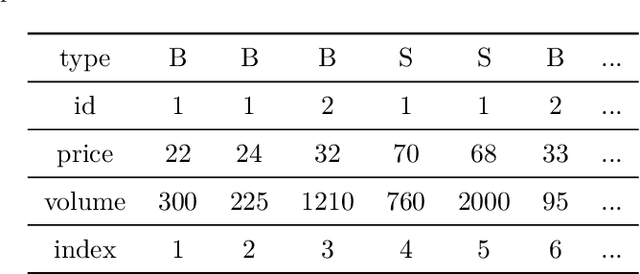
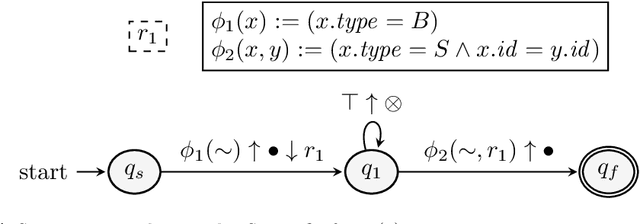


Abstract:We present a system for Complex Event Recognition (CER) based on automata. While multiple such systems have been described in the literature, they typically suffer from a lack of clear and denotational semantics, a limitation which often leads to confusion with respect to their expressive power. In order to address this issue, our system is based on an automaton model which is a combination of symbolic and register automata. We extend previous work on these types of automata, in order to construct a formalism with clear semantics and a corresponding automaton model whose properties can be formally investigated. We call such automata Symbolic Register Transducers (SRT). We show that SRT are closed under various operators, but are not in general closed under complement and they are not determinizable. However, they are closed under these operations when a window operator, quintessential in Complex Event Recognition, is used. We show how SRT can be used in CER in order to detect patterns upon streams of events, using our framework that provides declarative and compositional semantics, and that allows for a systematic treatment of such automata. For SRT to work in pattern detection, we allow them to mark events from the input stream as belonging to a complex event or not, hence the name "transducers". We also present an implementation of SRT which can perform CER. We compare our SRT-based CER engine against other state-of-the-art CER systems and show that it is both more expressive and more efficient.
Early Time-Series Classification Algorithms: An Empirical Comparison
Mar 03, 2022
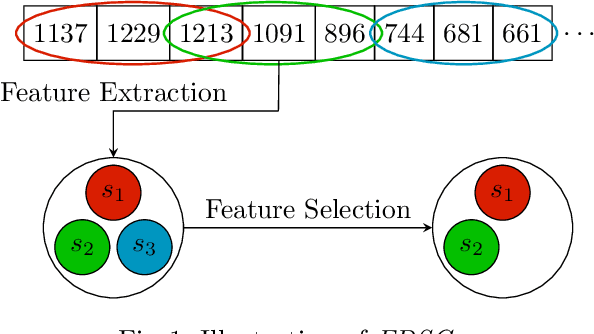


Abstract:Early Time-Series Classification (ETSC) is the task of predicting the class of incoming time-series by observing as few measurements as possible. Such methods can be employed to obtain classification forecasts in many time-critical applications. However, available techniques are not equally suitable for every problem, since differentiations in the data characteristics can impact algorithm performance in terms of earliness, accuracy, F1-score, and training time. We evaluate six existing ETSC algorithms on publicly available data, as well as on two newly introduced datasets originating from the life sciences and maritime domains. Our goal is to provide a framework for the evaluation and comparison of ETSC algorithms and to obtain intuition on how such approaches perform on real-life applications. The presented framework may also serve as a benchmark for new related techniques.
Symbolic Register Automata for Complex Event Recognition and Forecasting
Oct 08, 2021



Abstract:We propose an automaton model which is a combination of symbolic and register automata, i.e., we enrich symbolic automata with memory. We call such automata Symbolic Register Automata (SRA). SRA extend the expressive power of symbolic automata, by allowing Boolean formulas to be applied not only to the last element read from the input string, but to multiple elements, stored in their registers. SRA also extend register automata, by allowing arbitrary Boolean formulas, besides equality predicates. We study the closure properties of SRA under union, intersection, concatenation, Kleene closure, complement and determinization and show that SRA, contrary to symbolic automata, are not in general closed under complement and they are not determinizable. However, they are closed under these operations when a window operator, quintessential in Complex Event Recognition, is used. We show how SRA can be used in Complex Event Recognition in order to detect patterns upon streams of events, using our framework that provides declarative and compositional semantics, and that allows for a systematic treatment of such automata. We also show how the behavior of SRA, as they consume streams of events, can be given a probabilistic description with the help of prediction suffix trees. This allows us to go one step beyond Complex Event Recognition to Complex Event Forecasting, where, besides detecting complex patterns, we can also efficiently forecast their occurrence.
Complex Event Forecasting with Prediction Suffix Trees: Extended Technical Report
Sep 01, 2021



Abstract:Complex Event Recognition (CER) systems have become popular in the past two decades due to their ability to "instantly" detect patterns on real-time streams of events. However, there is a lack of methods for forecasting when a pattern might occur before such an occurrence is actually detected by a CER engine. We present a formal framework that attempts to address the issue of Complex Event Forecasting (CEF). Our framework combines two formalisms: a) symbolic automata which are used to encode complex event patterns; and b) prediction suffix trees which can provide a succinct probabilistic description of an automaton's behavior. We compare our proposed approach against state-of-the-art methods and show its advantage in terms of accuracy and efficiency. In particular, prediction suffix trees, being variable-order Markov models, have the ability to capture long-term dependencies in a stream by remembering only those past sequences that are informative enough. Our experimental results demonstrate the benefits, in terms of accuracy, of being able to capture such long-term dependencies. This is achieved by increasing the order of our model beyond what is possible with full-order Markov models that need to perform an exhaustive enumeration of all possible past sequences of a given order. We also discuss extensively how CEF solutions should be best evaluated on the quality of their forecasts.
Wayeb: a Tool for Complex Event Forecasting
Dec 16, 2018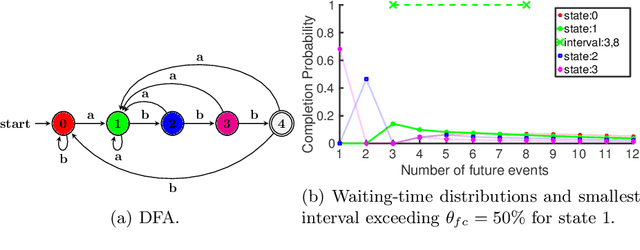
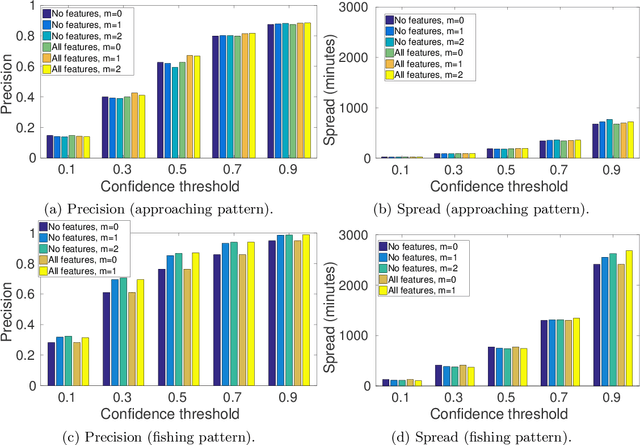
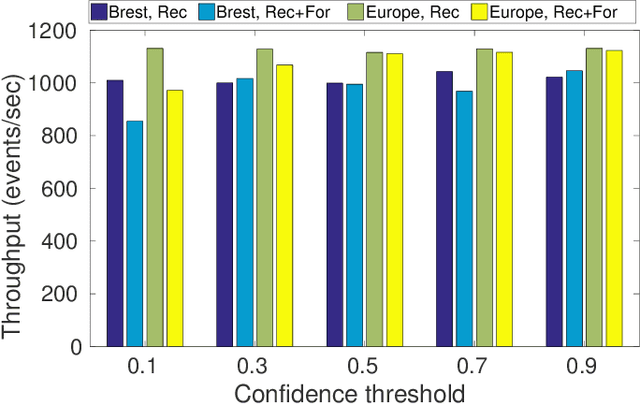
Abstract:Complex Event Processing (CEP) systems have appeared in abundance during the last two decades. Their purpose is to detect in real-time interesting patterns upon a stream of events and to inform an analyst for the occurrence of such patterns in a timely manner. However, there is a lack of methods for forecasting when a pattern might occur before such an occurrence is actually detected by a CEP engine. We present Wayeb, a tool that attempts to address the issue of Complex Event Forecasting. Wayeb employs symbolic automata as a computational model for pattern detection and Markov chains for deriving a probabilistic description of a symbolic automaton.
Event Forecasting with Pattern Markov Chains
Apr 27, 2018



Abstract:We present a system for online probabilistic event forecasting. We assume that a user is interested in detecting and forecasting event patterns, given in the form of regular expressions. Our system can consume streams of events and forecast when the pattern is expected to be fully matched. As more events are consumed, the system revises its forecasts to reflect possible changes in the state of the pattern. The framework of Pattern Markov Chains is used in order to learn a probabilistic model for the pattern, with which forecasts with guaranteed precision may be produced, in the form of intervals within which a full match is expected. Experimental results from real-world datasets are shown and the quality of the produced forecasts is explored, using both precision scores and two other metrics: spread, which refers to the "focusing resolution" of a forecast (interval length), and distance, which captures how early a forecast is reported.
The Complex Event Recognition Group
Feb 12, 2018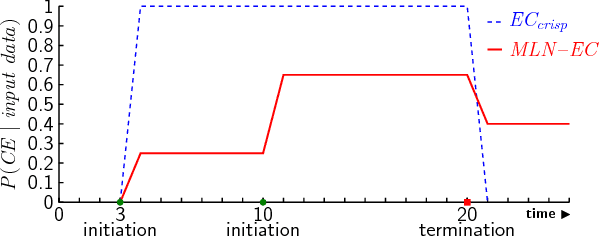
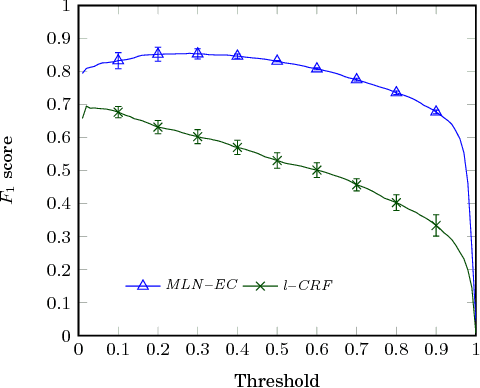
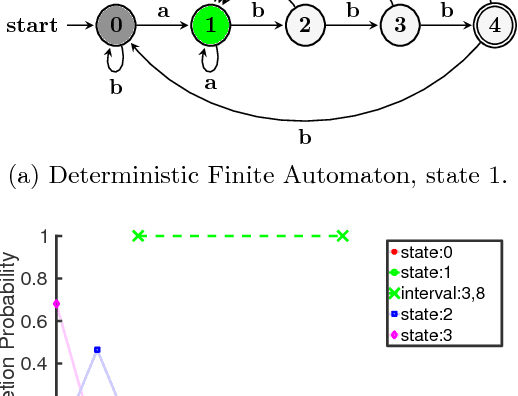
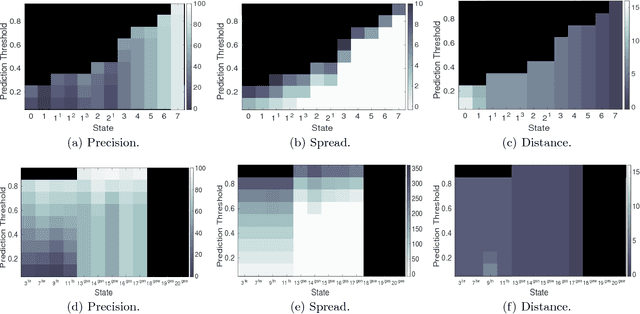
Abstract:The Complex Event Recognition (CER) group is a research team, affiliated with the National Centre of Scientific Research "Demokritos" in Greece. The CER group works towards advanced and efficient methods for the recognition of complex events in a multitude of large, heterogeneous and interdependent data streams. Its research covers multiple aspects of complex event recognition, from efficient detection of patterns on event streams to handling uncertainty and noise in streams, and machine learning techniques for inferring interesting patterns. Lately, it has expanded to methods for forecasting the occurrence of events. It was founded in 2009 and currently hosts 3 senior researchers, 5 PhD students and works regularly with under-graduate students.
Online Event Recognition from Moving Vessel Trajectories
Jan 22, 2016



Abstract:We present a system for online monitoring of maritime activity over streaming positions from numerous vessels sailing at sea. It employs an online tracking module for detecting important changes in the evolving trajectory of each vessel across time, and thus can incrementally retain concise, yet reliable summaries of its recent movement. In addition, thanks to its complex event recognition module, this system can also offer instant notification to marine authorities regarding emergency situations, such as risk of collisions, suspicious moves in protected zones, or package picking at open sea. Not only did our extensive tests validate the performance, efficiency, and robustness of the system against scalable volumes of real-world and synthetically enlarged datasets, but its deployment against online feeds from vessels has also confirmed its capabilities for effective, real-time maritime surveillance.
 Add to Chrome
Add to Chrome Add to Firefox
Add to Firefox Add to Edge
Add to Edge